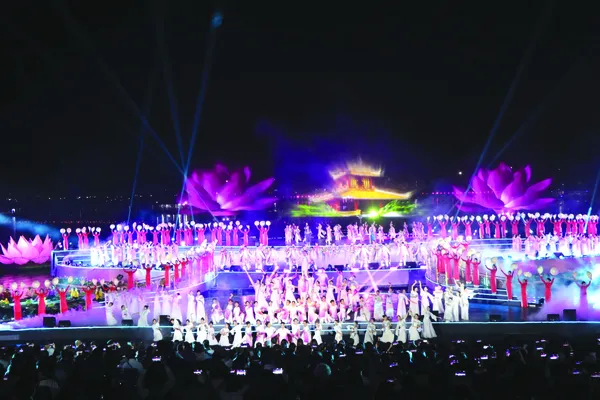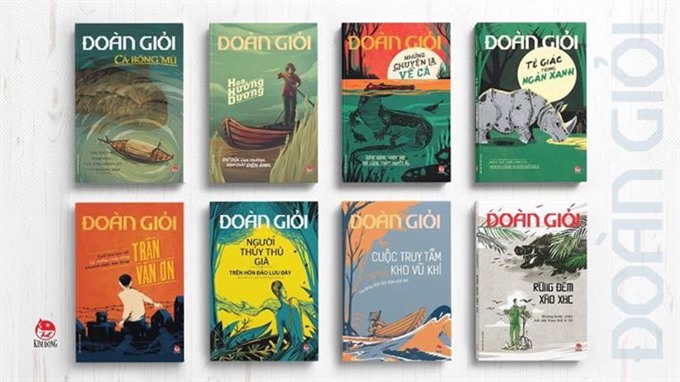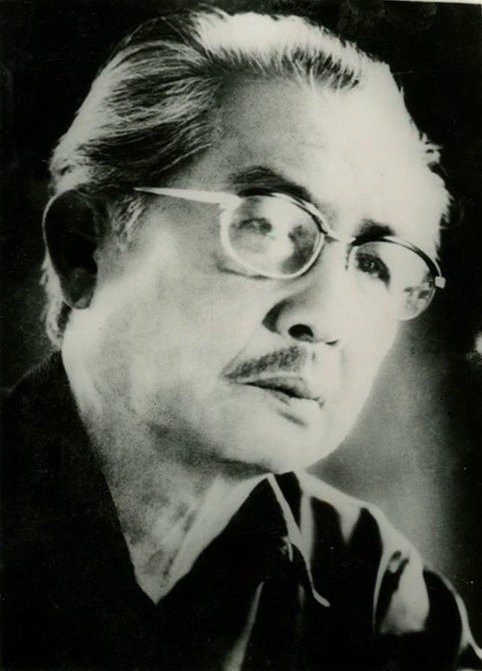 Features
Features

Books of late author Đoàn Giỏi, a guru of southern literature, reprinted as nation celebrates his 91st birthday
 |
| Back in print: Eight books by veteran author Đoàn Giỏi have been reprinted by the Kim Đồng Publishing House in Hà Nội to celebrate the writer’s 91st birthday. (Photo from Kim Đồng Publishing House Facebook) |
Books of late author Đoàn Giỏi, a guru of southern literature, reprinted as nation celebrates his 91st birthday
By Thu Anh
Eight books by late author Đoàn Giỏi of Tiền Giang Province, winner of the State Award for Literature and Arts in 2001, have been reprinted to celebrate the writer’s 91st birthday anniversary.
Featured works include Cá Bống Mú (The White Bass), Những Chuyện Lạ Về Cá (Strange Stories of Fish), Tê GiácTrong Ngàn Xanh (Rhinos in the Forest) and Rừng Đêm Xào Xạc (The Voice of the Forest at Night), which focus on the south’s natural world and messages about environmental issues.
The books include colourful pictures and postcards by young artists working with the Kim Đồng Publishing House, a leading publisher in Hà Nội.
His novel Cá Bống Mú, first published in 1955, tells the stories of southern farmers who face danger and challenges to reclaim wild land for residential and agricultural areas.
Two short stories, Những Chuyện Lạ Về Cá in 1981 and Tê Giác Trong Ngàn Xanh in 1982, include scientific knowledge about fish and wild animals in southern forests.
Both books highlighted the brave fishermen and farmers of the area.
His memoir Rừng Đêm Xào Xạc, published in 1988, features the writer’s memories and stories in the southernmost province of Cà Mau. Giỏi’s thoughts about people fall in line with nature.
The four books are valuable for students and lecturers in environmental and biology studies at universities and institutes.
 |
| Doyen: Author Đoàn Giỏi tuoitre.vn photo |
His other publications are Trần Văn Ơn (anti-war student Trần Văn Ơn), Người Thủy Thủ Già Trên Hòn Đảo Lưu Đày (Old Sailor Exiled on the Prison Island) and Cuộc Truy Tầm Kho Vũ Khí (Ammunition Dump Hunt).
Trần Văn Ơn, first published in 1955, depicts the death of Trần Văn Ơn, a student at Lycee Petrus Ký (now Lê Hồng Phong High School) who participated in the movement at schools to demand independence and democracy in Sài Gòn. He was killed by the colonialist police while on strike in 1950.
Cuộc Truy Tầm Kho Vũ Khí in 1962 describes a hunt to find weapons between two groups of Vietnamese and French soldiers.
Người Thủy Thủ Già Trên Hòn Đảo Lưu Đày, published in 1988, features the life and revolutionary career of Tôn Đức Thắng, who was deported to the prison island of Poulo Côn Đảo (Côn Đảo Prison) by the French colonialists.
“Giỏi’s books include magical and adventurous topics. His writing style helped start a contemporary trend followed by artists today,” said poet Trương Trọng Nghĩa, deputy chairman of the Tiền Giang Province’s Literature and Arts Association.
Nghĩa participated in a seminar on Giỏi’s literary career, called Nhà Văn Đoàn Giỏi – Đại Thụ Phương Nam (Author Đoàn Giỏi-Guru of the Literature of Southern Việt Nam), organised by the Kim Đồng Publishing House in HCM City last week.
The seminar attracted dozens of writers, cultural researchers, historians and filmmakers, such as Trần Tiến Đức, Tô Hoàng and Huỳnh Mẫn Chi.
Several hundred readers from Hà Nội, HCM City and southern provinces were also featured.
“The beauty of southern nature and people is reflected in a lively way in Giỏi’s books,” Nghĩa said.
“His works include big issues on the climate and environmental destruction, which are still fresh in communities and are of concern to scientists and environment experts,” he added.
Giỏi was born into a big land-owning family in Châu Thành District of Mỹ Tho Province (now Tiền Giang) in 1925.
His family donated its properties to the Việt Minh guerrillas after the August Revolution in 1945.
Giỏi spent two years studying at the Gia Định Fine Arts School, which is now HCM City University of Fine Arts.
His first short story was published in a newspaper in Sài Gòn in 1943.
In 1955, he worked for the Voice of Việt Nam and Việt Nam Association of Literature and Arts in Hà Nội.
He was a member of the Việt Nam Writers Association’s executive board between 1957 and 1959.
Giỏi wrote in different genres, including short stories, memoirs, novels, poems, plays and commentaries.
He is well-known for several works, including the novel Từ Đất Tiền Giang (From Tiền Giang) in 1955 and poetry collections Chiến Sĩ Tháp Mười (Soldiers of Đồng Tháp Mười) in 1949 and Giữ Vững Niềm Tin (Keep Faith) in 1954.
His works for children offer joyful adventures and brave characters.
Many of his books have been reprinted several times, attracting millions of readers from different generations for years.
“After reading Giỏi’s works, children living in the north in the 1950s and 60s improved their love and knowledge about the south and its people,” said writer and critic Tô Hoàng at the seminar.
Hoàng enjoyed reading Giỏi when he was a boy and praises his work to his students.
“I think Giỏi is also a linguist who expands the southern language through his works,” he said.
The writer, who used other names, such as Huyền Tư, Nguyễn Hoài, and Nguyễn Phú Lễ, died in 1989 in HCM City. A street in Tân Phú District and a school in his homeland, Tiền Giang, were named after him.
Southern land
Giỏi’s Đất Rừng Phương Nam (Southern Land) is an epic in praise of southern people, their history, culture and lifestyle.
He wrote the book in June 1957 when he was 32 years old. One month later, it was released by the newly opened Kim Đồng Publishing House, a publisher that served children.
The 255-page book is about the adventures of a boy, Nam, who loses his family in a battle and lives in the southwestern region under the French colonialist.
He improves by learning new things and experiences with the help of many poor farmers and children.
He witnesses the sufferings of farmers during war and finally joins the Việt Minh guerrillas to fight French occupation.
Đất Rừng Phương Nam has been printed in dozens of languages, such as English, Russian, Chinese, Spanish and Polish.
The extract named Sông Nước Cà Mau (Rivers of Cà Mau) from the book has been used in textbooks for sixth-grade students.
"I read Đất Rừng Phương Nam when I was 15 years old. For me, the book is a Vietnamese version of English author Daniel Defoe’s Robinson Crusoe,” said Nguyễn Hương Giang, a third-year student at National Hà Nội University.
“The book encourages people to love nature and discover the country and people as well. It helps readers improve their mind and soul,” she added.
“Đất Rừng Phương Nam’s 20 chapters captured the imaginations of readers, and is one of the country’s favourite books,” said Meritorious Artist and movie director Vinh Sơn. “The book provides readers, particularly children, with new things about nature, animals, rivers and plants in the south.”
Sơn told local media that his most famous work is Đất Phương Nam, (Song of the South), an 11-part TV series which was adapted from Giỏi’s book.
“My film released in 1997 became a hit. It aired many times on HCM City Television and provincial stations,” said Sơn, who is also the film’s scriptwriter.
Produced by the HCM City Television’s Film Studio (TFS), the film won first prize at the 1997 National Film Festival presented by the Việt Nam Cinematography Association.
“I hope to return Đất Phương Nam to the big screen to meet the demand of audiences at home and abroad,“ Sơn said. — VNS




